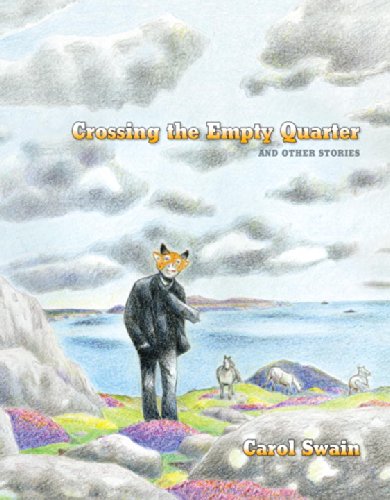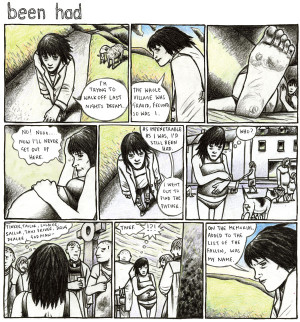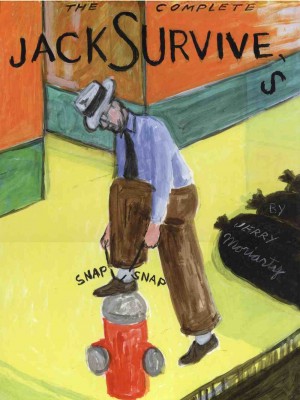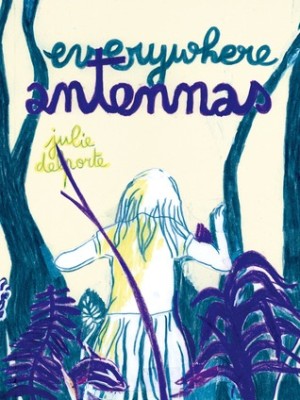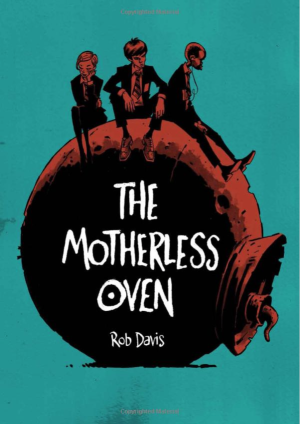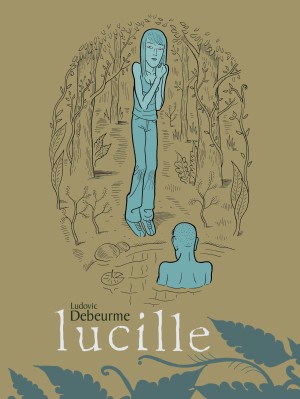Review by Graham Johnstone
Crossing the Empty Quarter is a retrospective of Carol Swain’s short comics. The title comes from one of the stories, but aptly captures the overall feel. These are mostly stories of people with little role or purpose, who embark on journeys, seeking small pleasures and sublime moments.
Swain emerged from the British small press comics boom of the 1980s, yet even amongst this highly varied and personal work she stood out. Perhaps it took someone so far outside comics traditions – a young woman painter – to realise that comics didn’t need to be rendered in ink lines. Swain created loose and highly tonal images with pencils – letting the paper texture and reproductive process convert these into the required binary black or white areas. It worked well in the early copy shop editions, but in this deluxe hardback, we can better appreciate the nuances.
These stories span her first twenty years. Many appeared in her own Way Out Strips series’, with the rest spread across such a range of publications, that possibly only Swain herself would have them all.
It’s still hard to find comparators in comics for her art or stories – but let’s try. Compositionally she may owe something to another painter working in comics – Jerry Moriarty. His rendering is more obviously ‘painterly’, but his striking compositions seem to have influenced Swain’s. In both artists, the settings become resonant and meaningful statements in themselves. Moriarty, like his Raw contemporaries, is steeped in quirky old America, while Swain is rooted in the rural landscapes of Wales, and Britain’s bleak modernity of shopping malls, flyovers, and subway tunnels.
At first glance Swain couldn’t be more different from the assertive brush lines of Chris Reynolds and Paul Harvey in Mauretania Comics, where some of these stories appeared. She shares with Reynolds though, not just roots in Wales, but also very painterly concerns, like figures in the landscapes, often given monumental status through striking worms-eye and bird-eye views.
Her writing has been compared to the ‘dirty realist’ fiction of Raymond Carver, with short and powerful glimpses of working people. It’s a sound comparison, yet Swain is again rooted in the Britain of the time – when so many young people had no access to gainful work. The one time here characters acquire any money (a slot machine win) it’s like a powerful new drug to them and they blow it all on a wild night. They wake up in jail, and when they finally piece together what they did, it’s a symbolic attack on corporate entertainment. These stories are redolent of their time, without seeming dated in any way. In fact, in the wake of an economic downturn, and increasing inequality – they’re more relevant than ever. There’s even a story of refugees or migrants illicitly arriving in a boat, their first sight of London a body floating in the river.
The first half of the book predates her first long form work, 1997s Invasion of the Mind Sappers. These are mostly very short – four pages or less. The later ones can reach ten, but that doesn’t necessarily mean more elaborate plots, just greater immersion.
We rarely see Swain stories in colour, so they’re a welcome addition. In some it seems a hesitant addition to black and white pages, but in others the colour has a vivid, almost luminous quality set against the uncoloured figures.
All of this adds up to a well assembled collection of a still unique creator.
